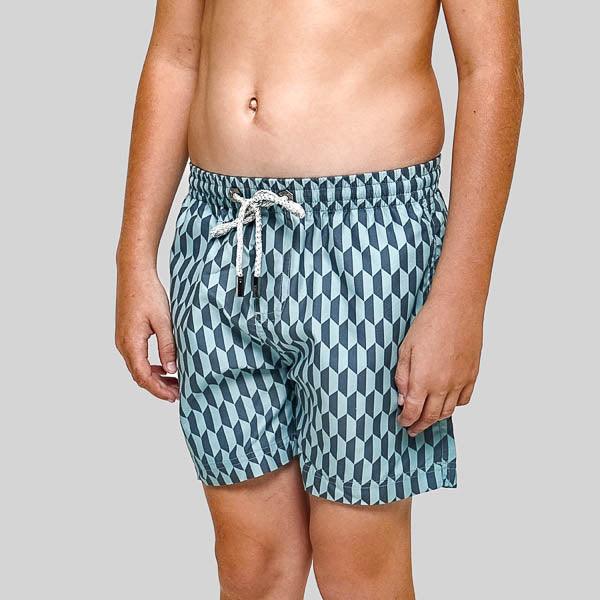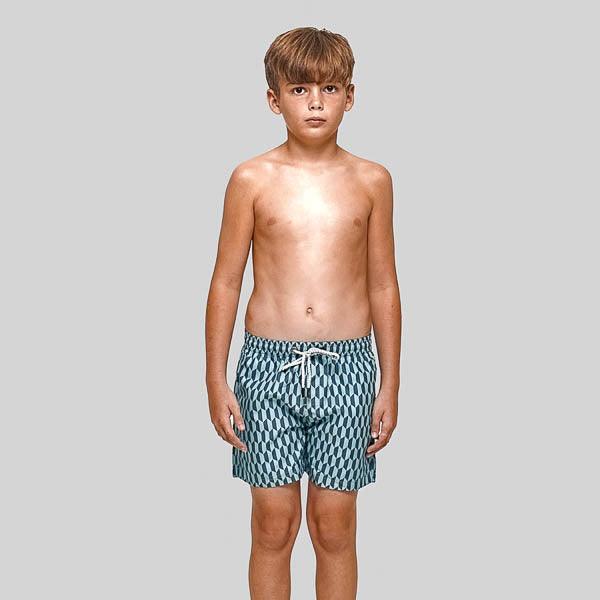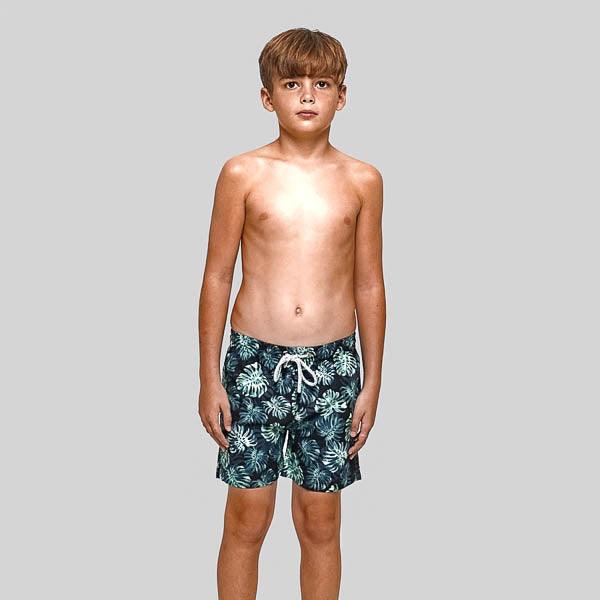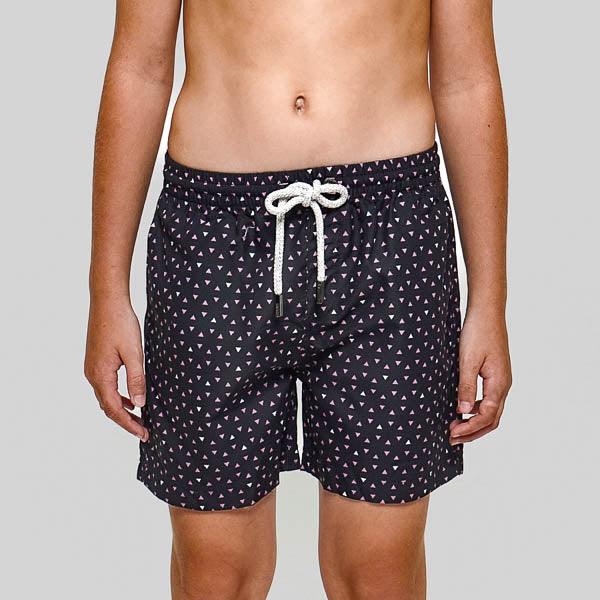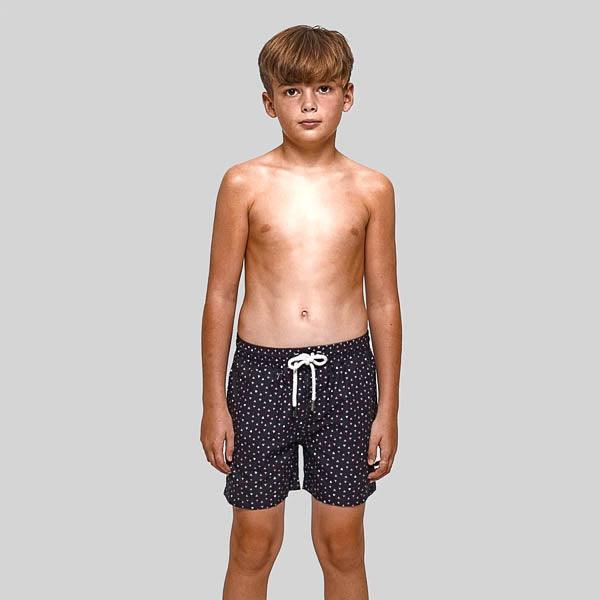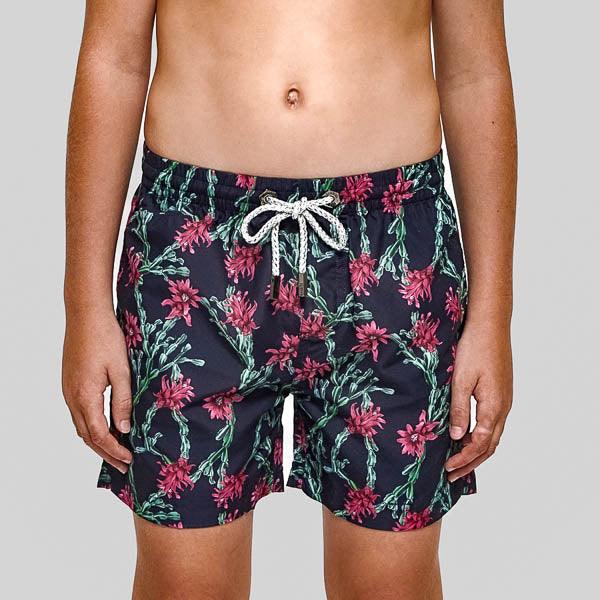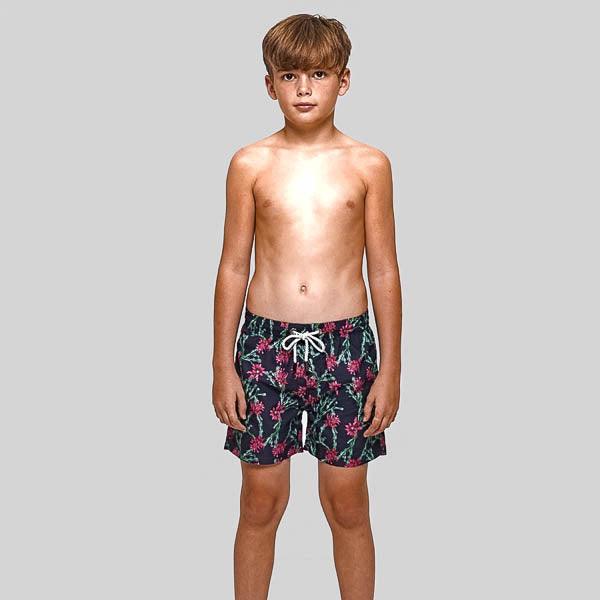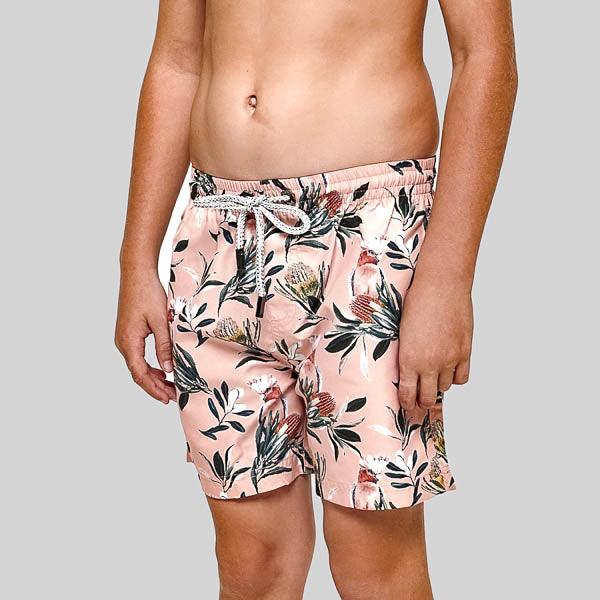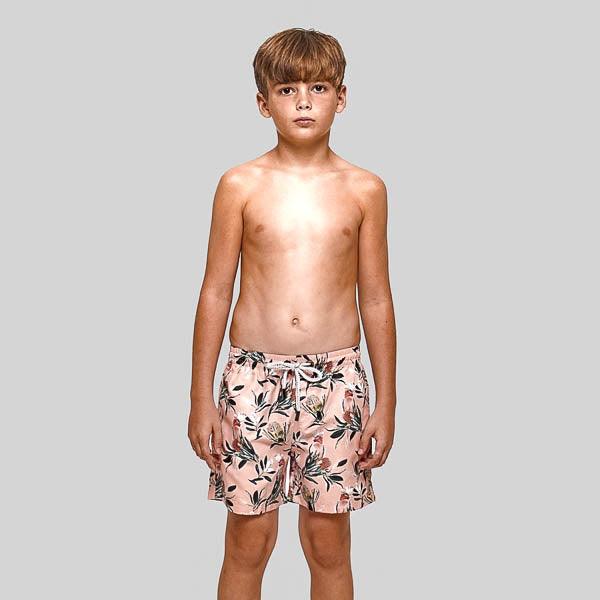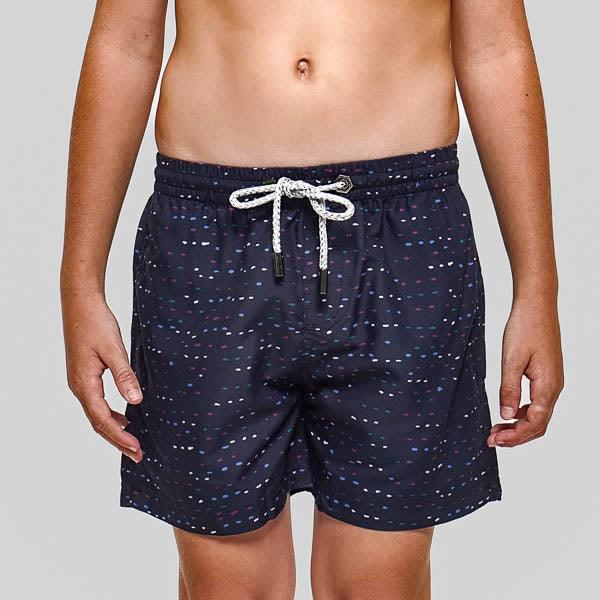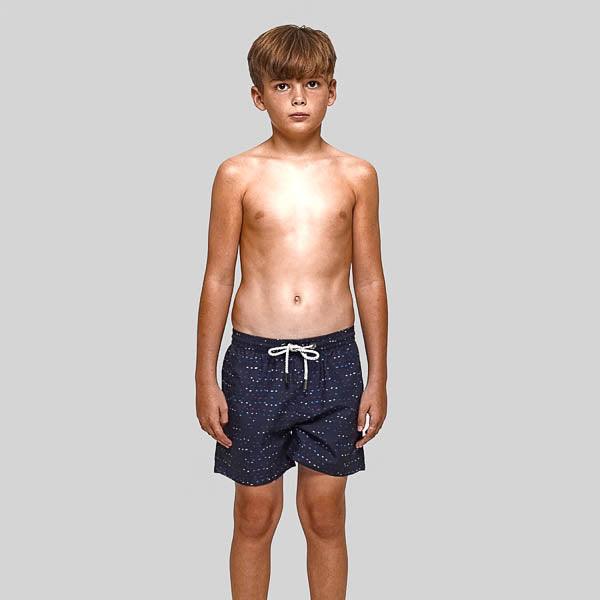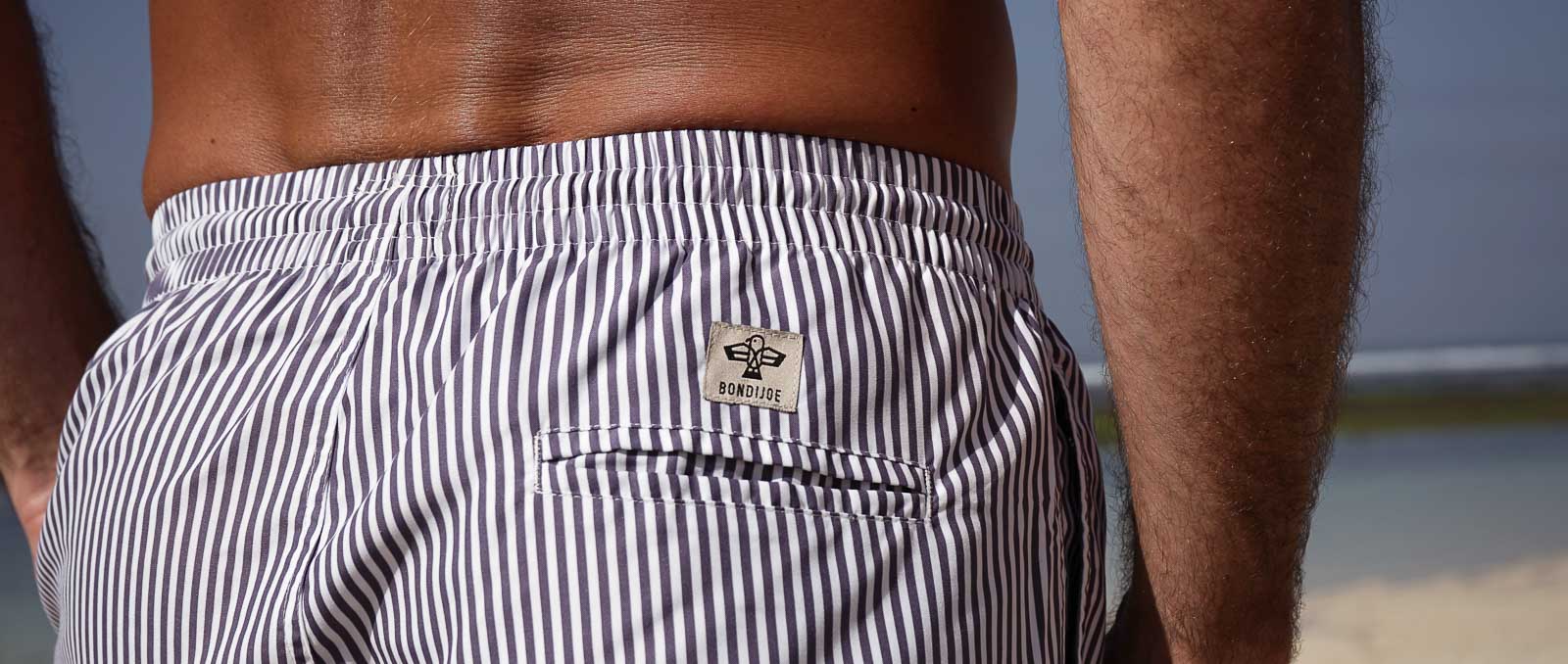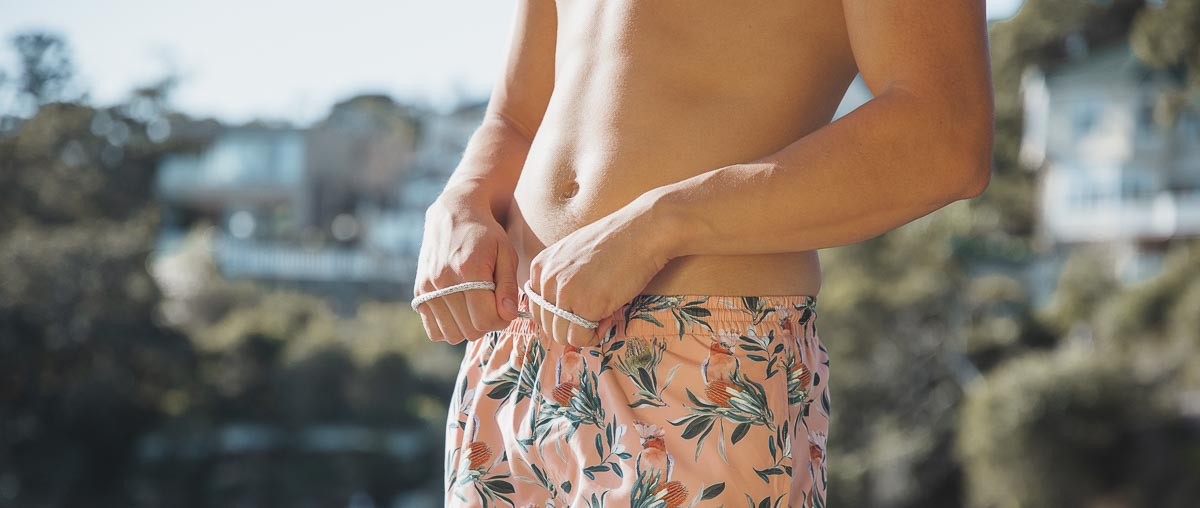Buying swimwear for boys can be challenging, especially when it comes to finding the right size. A well-fitting swimsuit ensures comfort, freedom of movement, and confidence, whether your child is swimming, playing beach games, or just lounging by the pool. This guide provides essential tips on using size guides to buy boys' swimwear, helping you navigate measurements, size charts, and fit considerations for the best possible choice.
Understanding Size Guides
Importance of Accurate Measurements
Accurate measurements are crucial for selecting the right swimwear size. Ill-fitting swimwear can be uncomfortable and restrict movement, so it’s important to measure your child correctly.
Key Measurements:
- Waist: Measure around the narrowest part of the waist, typically just above the belly button.
- Hips: Measure around the fullest part of the hips.
- Inseam: Measure from the crotch to the desired length on the leg, depending on the style of swimwear.
- Height: Measure from the top of the head to the floor while your child stands straight.
How to Measure
To ensure accuracy, use a flexible measuring tape and follow these steps:
-
Waist Measurement: Have your child stand straight and relax their abdomen. Wrap the measuring tape around the narrowest part of the waist, ensuring it's snug but not tight.
-
Hip Measurement: Wrap the measuring tape around the widest part of the hips and buttocks, keeping it parallel to the floor.
-
Inseam Measurement: Measure from the crotch to the bottom of the desired length (mid-thigh, knee, or longer), ensuring the tape is straight.
-
Height Measurement: Have your child stand against a wall without shoes. Mark the top of the head and measure the distance to the floor.
Navigating Size Charts
Decoding Size Charts
Different brands may have varying size charts, so it’s essential to compare your child’s measurements with the specific size guide provided by the manufacturer. Most size charts will include waist, hip, and height measurements.
Common Size Labels:
- Numeric Sizes: 2, 4, 6, 8, etc.
- Alpha Sizes: XS, S, M, L, XL
- Age-Based Sizes: 4T, 5T, 6-7, etc.
Tips for Using Size Charts
-
Compare Measurements: Match your child’s measurements to the size chart provided by the brand. If your child falls between sizes, consider the next size up for comfort and room to grow.
-
Check Reviews: Customer reviews can provide insights into how the swimwear fits in real life. Look for comments on whether the sizes run small, large, or true to size.
-
Account for Growth: Children grow quickly, so consider selecting a slightly larger size if your child is in a growth spurt phase.
Fit Considerations
Style and Cut
Different styles of swimwear may fit differently, so it’s important to choose the right cut for your child’s activities and preferences.
Common Styles:
- Board Shorts: Typically longer, reaching the knee or just above. Ideal for beach activities and casual wear.
- Trunks: Mid-thigh length, offering a balanced look suitable for swimming and playing.
- Briefs: Short and snug, providing minimal coverage and maximum mobility. Ideal for competitive swimming.
Comfort and Mobility
Comfort and mobility are key factors in choosing swimwear. The swimwear should allow your child to move freely without chafing or irritation.
Features to Look For:
- Elastic Waistbands: Adjustable waistbands provide a secure fit and accommodate growth.
- Stretch Fabric: Fabrics with spandex or elastane offer flexibility and comfort.
- Flat Seams: Flat seams reduce chafing and enhance comfort during active play.
Growth and Adjustability
Children grow rapidly, so adjustable features can extend the life of the swimwear.
Adjustable Features:
- Drawstrings: Provide a customizable fit at the waist.
- Velcro Closures: Offer easy adjustments for a better fit.
- Elastic Panels: Stretch with your child’s growth for prolonged use.
Choosing the Right Style
Activity-Specific Swimwear
Select swimwear based on your child’s primary activities. Different activities may require specific features for optimal performance and comfort.
Examples:
- Swimming: Opt for streamlined designs like briefs or trunks for minimal drag.
- Beach Sports: Choose board shorts or trunks for freedom of movement and protection.
- Casual Wear: Versatile designs that can double as casual shorts for all-day wear.
Seasonal Considerations
The season and climate can influence the type of swimwear you choose.
Summer:
- Lightweight Fabrics: Breathable and quick-drying materials to keep your child cool.
- Bright Colors: Fun and vibrant colors that reflect the season’s spirit.
Cooler Weather:
- Longer Lengths: Board shorts or longer trunks for extra coverage.
- UV Protection: Fabrics with UPF protection to shield against the sun’s rays.
Practical Tips for Buying Boys' Swimwear
Try Before You Buy
Whenever possible, have your child try on the swimwear to ensure a good fit. This can help you avoid the hassle of returns and exchanges.
In-Store Tips:
- Check Fit: Ensure the swimwear fits comfortably at the waist, hips, and legs.
- Move Around: Have your child move, bend, and stretch to test mobility and comfort.
- Inspect Details: Check for quality stitching, secure closures, and any potential irritants.
Online Shopping Tips
When buying online, take extra care to read product descriptions, size charts, and customer reviews.
Online Tips:
- Detailed Reviews: Look for detailed reviews that mention fit and quality.
- Return Policies: Ensure the retailer has a good return policy in case the swimwear doesn’t fit.
- Multiple Sizes: Consider ordering multiple sizes if unsure, and return those that don’t fit.
FAQs
1. How do I know if the swimwear fits properly?
Properly fitting swimwear should be snug but not tight, allowing for comfortable movement. Ensure there is no pinching at the waist or leg openings, and check that the swimwear stays in place during active movement.
2. What is the best way to measure my child for swimwear?
Use a flexible measuring tape to measure the waist, hips, inseam, and height. Compare these measurements to the brand’s size chart for the best fit.
3. Should I buy a size up for my child’s swimwear?
If your child is between sizes or in a growth spurt phase, it’s often a good idea to buy a size up for extra room and longer use.
4. What materials are best for boys' swimwear?
Polyester and nylon blends with spandex or elastane are ideal for boys' swimwear. These materials offer durability, stretch, and quick-drying properties.
5. How often should I replace my child’s swimwear?
Replace swimwear when it shows signs of wear such as fading, loss of elasticity, or damage to seams and closures. High-quality swimwear may last longer, but frequent use and exposure to chlorine or saltwater can shorten its lifespan.
Conclusion
Choosing the right size and style of boys' swimwear involves careful consideration of measurements, fit, material, and activity needs. By following this comprehensive guide, you can ensure that your child enjoys comfortable, stylish, and durable swimwear for all their water adventures. Whether shopping in-store or online, taking the time to find the perfect fit will enhance your child's swimming experience and provide peace of mind for you as a parent. Be sure to also check out our other guides to buying boys swimwear.



